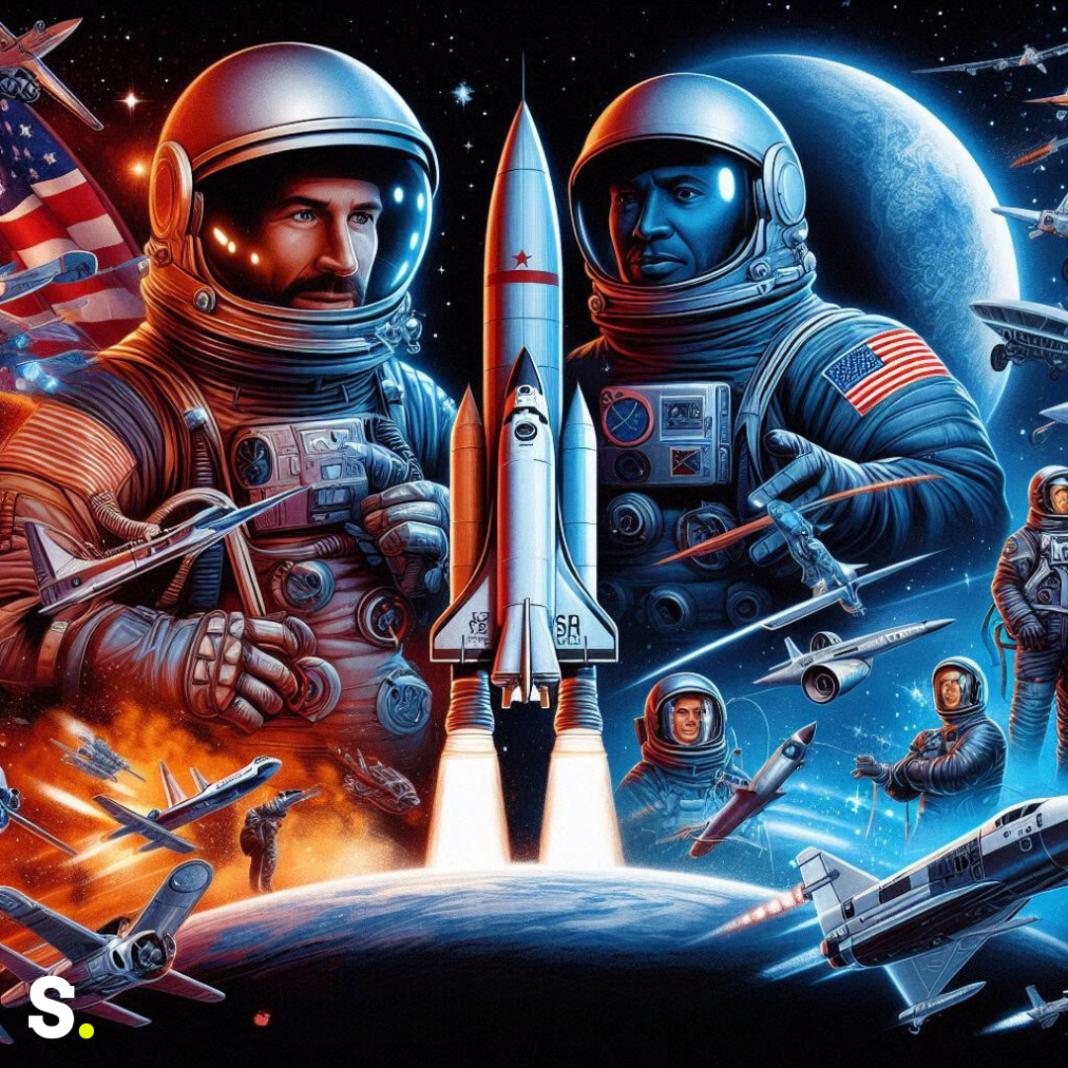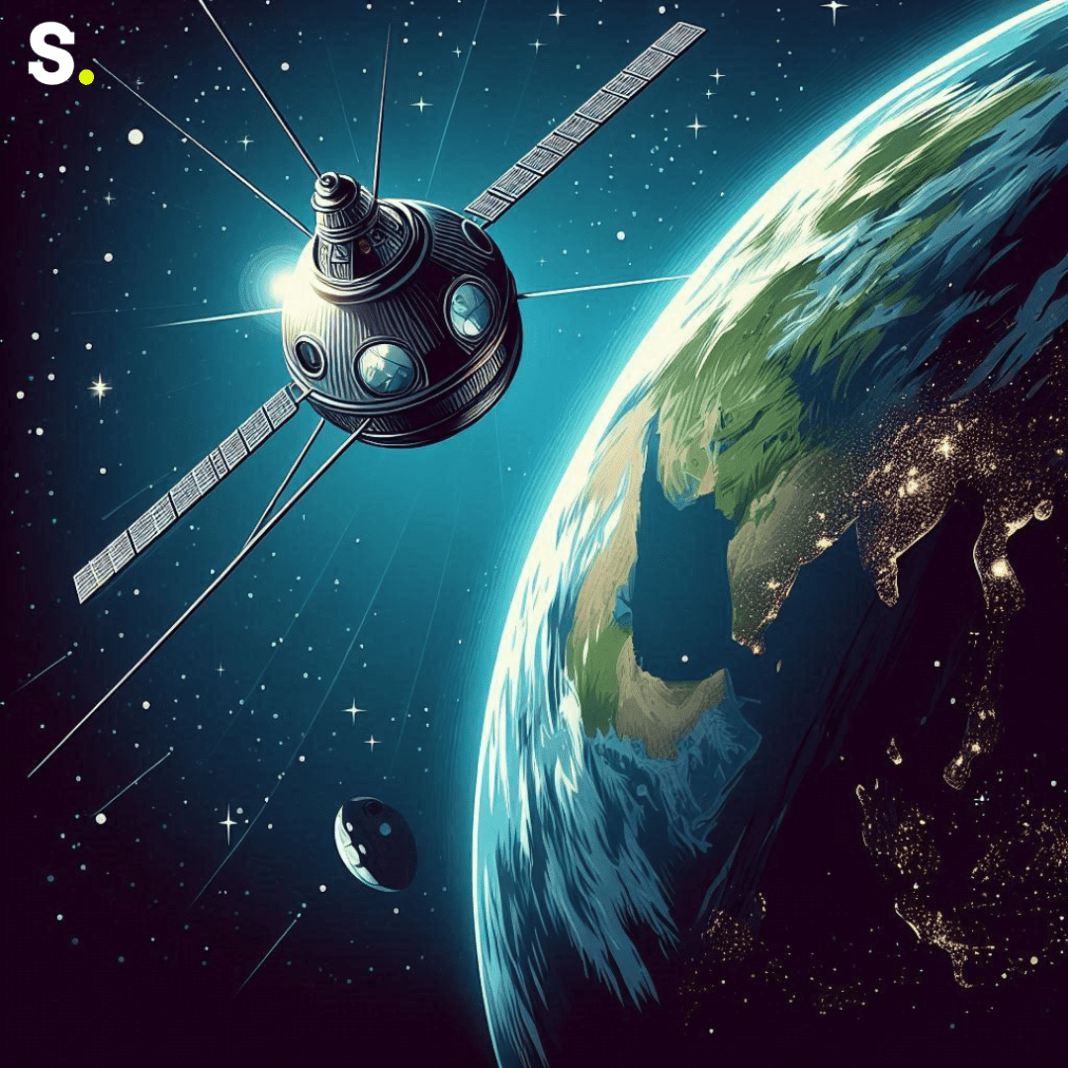The Space Race emerged from the intense competition between the United States and the Soviet Union during the Cold War. These two superpowers were the dominant forces after World War II, and for nearly half a century, they vied for supremacy in numerous fields, including military power, consumer goods, and, notably, space exploration. This rivalry was marked by a series of milestones and technological advancements, showcasing each side’s capabilities to the world. Notably, the technologies developed for spaceflight had significant military applications, as rockets could be used to launch missiles and satellites could be employed for surveillance.
The Cold War: An Era of Tension and Competition
The Cold conflict was not a conventional conflict, but rather an extended era of military and political hostility between the US and the USSR. Lasting nearly 50 years, this conflict saw the two nations engage in various proxy wars, such as the Vietnam War, and compete for dominance in many areas. The United States, a democratic nation, and the Soviet Union, governed by a communist regime, were ideologically opposed. This ideological clash extended to cultural, military, political, and technological fronts.
One of the most significant and perilous periods of the Cold War was the Cuban Missile Crisis. However, the Space Race was another crucial aspect of this conflict. Both countries aimed to demonstrate their superiority by achieving remarkable feats in space exploration. President John F. Kennedy, in particular, set a bold goal for the United States: landing a man on the Moon.
Understanding the Soviet Union
The Soviet Union, or the Union of Soviet Socialist Republics (U.S.S.R.), was a vast socialist state that existed from 1922 to 1991. Formed after a revolution and a civil war, it consisted of 15 republics, including much of the former Russian Empire. The Soviet Union was governed by the Communist Party and spanned large parts of Europe and Asia. The Russian republic was the largest and most powerful within the Soviet Union.
In the late 1980s, several republics within the Soviet Union began seeking independence, leading to the dissolution of the Soviet Union in 1991. This resulted in the creation of 15 separate countries: Armenia, Azerbaijan, Belarus, Estonia, Georgia, Kazakhstan, Kyrgyzstan, Latvia, Lithuania, Moldova, Russia, Tajikistan, Turkmenistan, Ukraine, and Uzbekistan. Estonia, Latvia, and Lithuania, however, were not recognized by the West as part of the U.S.S.R.; they were considered occupied territories from 1940 to 1991.
The Birth of Space Age Military Rockets
After World War II, both the United States and the Soviet Union began developing rockets for military purposes. These rockets were initially designed as long-range weapons but soon became tools for space exploration, giving rise to the Space Race. This race to conquer space became a defining feature of the Cold War era, with each side striving to achieve groundbreaking milestones.
Early Achievements in the Space Race
The early years of the Space Race were marked by a series of significant “firsts.” These included the launch of the first satellite, the first living being in space, the first person to travel into space for a whole day, the first person to orbit the Earth, and the first thing to strike the moon. These accomplishments attracted international notice and showed the rival countries’ superior technological capabilities.
Project Paperclip: Boosting American Space Efforts
Project Paperclip was a program that brought German and Austrian engineers, scientists, and technicians to the United States after World War II. These experts made significant contributions to American technology, rocket development, military preparedness, and, ultimately, spaceflight. However, the program was not without controversy, as it involved the coverup of the Nazi records of many of the specialists involved.
Developing Moon Rockets
When the Space Race began, neither the United States nor the Soviet Union had rockets powerful enough to send humans to the Moon and back. Both nations embarked on separate quests to develop more powerful rockets, leading to intense competition and remarkable technological advancements.
The Soviet Moonshot: Early Successes and Later Setbacks
The Soviet Union initially took the lead in the Space Race with a series of groundbreaking achievements. Nevertheless, in 1969, the United States succeeded in landing the first human on the Moon, despite these early victories. The diaries of Soviet rocket engineer Vasily Mishin provide insights into why the Soviet Union fell behind in the later stages of the Space Race.
American Space Programs: Mercury, Gemini, and Apollo
The United States developed several space programs to achieve its ambitious goals. Project Mercury focused on sending humans into space, while the Gemini Program aimed to develop the skills and techniques needed for a lunar landing. The Apollo Program, culminating in the historic Apollo 11 mission, successfully landed the first humans on the Moon, marking a significant victory for the United States.
The Mercury Program
The first attempt by the United States to launch humans into space was the Mercury Program. It aimed to demonstrate that humans could survive and work in space, paving the way for more ambitious missions in the future.
The Gemini Program
Following the Mercury Program, the Gemini Program focused on developing the skills necessary for lunar exploration. This included practicing maneuvers, such as docking spacecraft and conducting spacewalks, which were essential for a successful lunar landing.
The Apollo Program
The Apollo Program was the culmination of the United States’ efforts to land a man on the Moon. In 1969, Apollo 11 achieved this historic milestone, solidifying America’s position as the leader in space exploration. The program included 14 missions, each building on the successes of the previous ones.
From Competition to Cooperation
Both the US and the USSR imagined a long-term human presence in space following the Apollo moon missions. Eventually, the two superpowers began to cooperate in space exploration, leading to joint missions and collaborative efforts, such as the construction of the International Space Station.
The Launch of Sputnik and American Reactions
The Space Race began in earnest on October 4, 1957, when the Soviet Union successfully launched Sputnik, the world’s first artificial satellite. This achievement shocked the United States and sparked widespread public concern. President Dwight D. Eisenhower initially viewed Sputnik as a minor technological achievement, but the American public saw it as a significant threat, fueling fears of Soviet dominance in space.
In response to Sputnik, the United States intensified its efforts to develop its own space capabilities. In late 1957, America’s first attempt to launch a satellite, the Vanguard TV-3, ended in failure. However, the successful launch of Explorer 1 on January 31, 1958, marked a turning point. Recognizing the need for a dedicated space agency, the United States established NASA on October 1, 1958.
The Challenges and Triumphs of NASA’s Early Years
In its early years, NASA faced numerous challenges as it sought to define its mission and priorities. The agency was tasked with addressing scientific questions and developing technologies for space exploration. The period from 1958 to 1961 was particularly challenging as NASA worked to establish itself and determine its strategic direction.
On April 12, 1961, Soviet cosmonaut Yuri Gagarin became the first human to orbit the Earth, completing a 108-minute flight. This achievement was celebrated within the Soviet Union and further intensified the Space Race. The United States responded on May 5, 1961, when Navy test pilot Alan Shepard became the second person to travel into space.
President Kennedy’s Bold Vision
To put a man on the moon by the end of the decade was President John F. Kennedy’s audacious goal for the US, which he revealed in May 1961. This commitment galvanized NASA and led to a significant increase in funding and resources. Kennedy’s vision was not only a technological challenge but also a means to demonstrate American superiority during the Cold War.
The Perils of Space Exploration
The Space Race was not without its dangers. On January 27, 1967, the United States experienced its first major space disaster when a flash fire broke out during a simulated launch of Apollo 1, resulting in the deaths of three astronauts. Similarly, Soviet cosmonaut Vladimir Komarov died on April 24, 1967, when his craft, Soyuz 1, crashed due to a parachute failure.
Despite these tragedies, space exploration continued to advance. On September 12, 1962, President Kennedy delivered a speech at Rice University, reaffirming the goal of landing a man on the Moon. His words inspired a nation and underscored the importance of space exploration as a symbol of technological prowess and national pride.
Apollo 11: A Historic Achievement
On July 16, 1969, Apollo 11 launched from Kennedy Space Center, carrying astronauts Neil Armstrong, Buzz Aldrin, and Michael Collins. Four days later, on July 20, 1969, Neil Armstrong became the first human to walk on the Moon, followed by Buzz Aldrin. This historic event was watched by more than half a billion people worldwide and represented a significant victory for the United States in the Space Race.
The Soviet Union had also made attempts to reach the Moon, but their efforts were plagued by technical difficulties and failed launches. In July 1969, just days before Apollo 11’s successful landing, the Soviet Luna 15 mission, an automated module intended to return lunar samples, ended in failure when communication was lost.
Continued Achievements and the End of the Space Race
Following the success of Apollo 11, both the United States and the Soviet Union continued to achieve significant milestones in space exploration. The United States accomplished the first interplanetary flybys with Mariner 2 and Mariner 4, which explored Venus and Mars, respectively. The first female astronaut, Valentina Tereshkova, was sent into space by the Soviet Union in 1963.
As the 1970s began, relations between the United States and the Soviet Union improved, leading to discussions on arms control and space cooperation. One of the most symbolic moments of this new era was the Apollo-Soyuz mission in 1975, which saw American and Soviet spacecraft dock in orbit and astronauts from both countries greet each other in space. This mission marked a turning point in space diplomacy and symbolized the end of the Space Race.
The Legacy of the Space Race
Technology and exploration have been profoundly and permanently impacted by the Space Race. The intense competition between the United States and the Soviet Union drove rapid advancements in rocket and satellite technology. Many of the innovations developed for space exploration found applications in other fields, including communications, medicine, and materials science.
Today, space exploration continues to be a significant and dynamic field, with multiple countries and private companies participating in space missions. Nations like China and India have made significant strides, and private companies like SpaceX and Blue Origin are pushing the boundaries of space exploration with ambitious goals, such as Mars colonization and space tourism.
The Space Race was a remarkable period of history characterized by intense competition, groundbreaking achievements, and lasting technological advancements. It demonstrated the strength of human creativity and the will to discover new things. The rivalry between the United States and the Soviet Union in space not only demonstrated their technological prowess but also paved the way for international cooperation and continued exploration of space.




